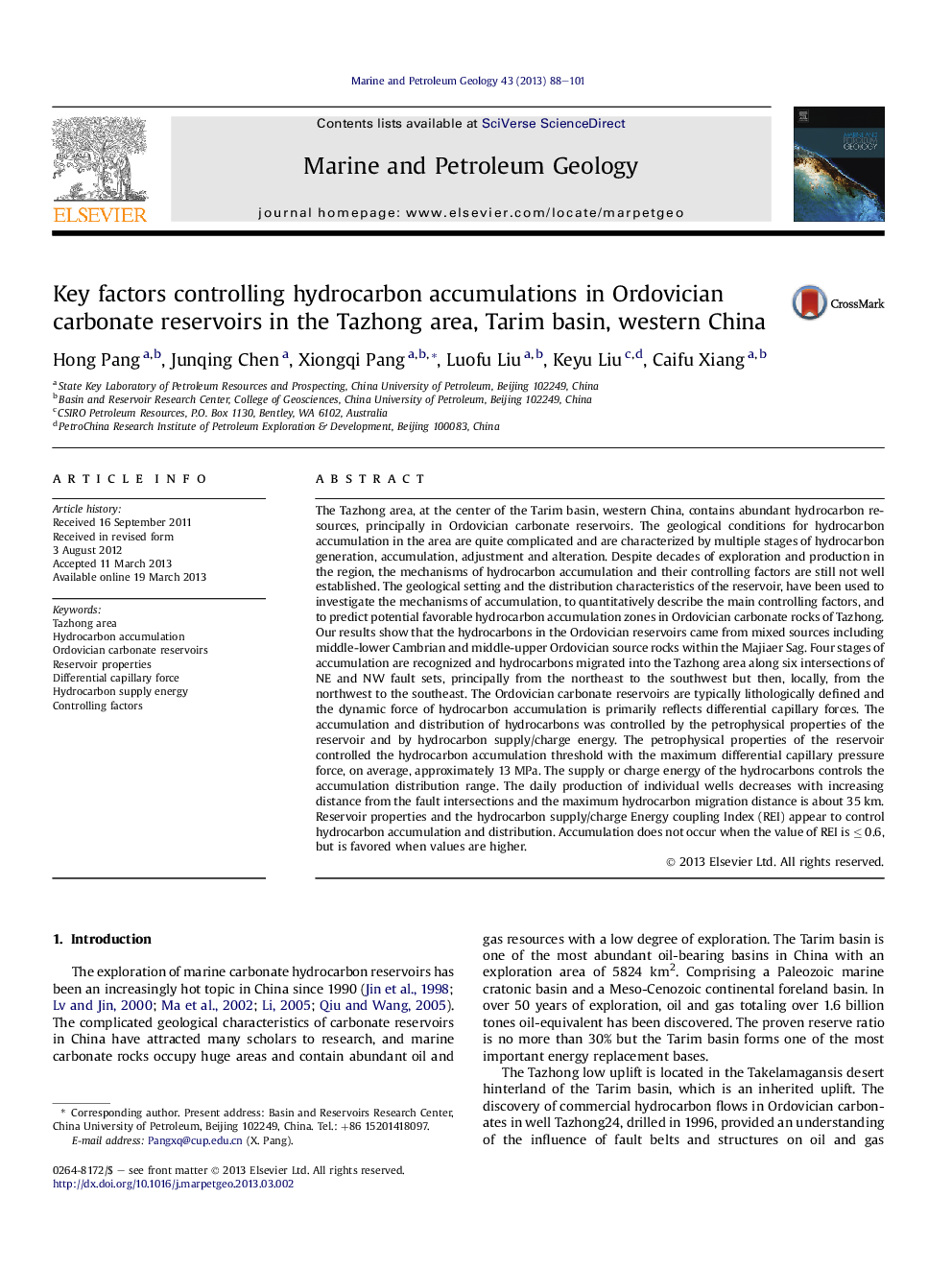| کد مقاله | کد نشریه | سال انتشار | مقاله انگلیسی | نسخه تمام متن |
|---|---|---|---|---|
| 6435515 | 1637181 | 2013 | 14 صفحه PDF | دانلود رایگان |

- The mechanism of hydrocarbon accumulation in the carbonate rocks of the Tazhong area in the Tarim basin is revealed.
- The study provides quantitative analysis of the controlling factors of hydrocarbon accumulation in this carbonate reservoir.
- The study provides a predictive method for favorable exploration in carbonate rocks in the Tazhong area of the Tarim basin.
The Tazhong area, at the center of the Tarim basin, western China, contains abundant hydrocarbon resources, principally in Ordovician carbonate reservoirs. The geological conditions for hydrocarbon accumulation in the area are quite complicated and are characterized by multiple stages of hydrocarbon generation, accumulation, adjustment and alteration. Despite decades of exploration and production in the region, the mechanisms of hydrocarbon accumulation and their controlling factors are still not well established. The geological setting and the distribution characteristics of the reservoir, have been used to investigate the mechanisms of accumulation, to quantitatively describe the main controlling factors, and to predict potential favorable hydrocarbon accumulation zones in Ordovician carbonate rocks of Tazhong. Our results show that the hydrocarbons in the Ordovician reservoirs came from mixed sources including middle-lower Cambrian and middle-upper Ordovician source rocks within the Majiaer Sag. Four stages of accumulation are recognized and hydrocarbons migrated into the Tazhong area along six intersections of NE and NW fault sets, principally from the northeast to the southwest but then, locally, from the northwest to the southeast. The Ordovician carbonate reservoirs are typically lithologically defined and the dynamic force of hydrocarbon accumulation is primarily reflects differential capillary forces. The accumulation and distribution of hydrocarbons was controlled by the petrophysical properties of the reservoir and by hydrocarbon supply/charge energy. The petrophysical properties of the reservoir controlled the hydrocarbon accumulation threshold with the maximum differential capillary pressure force, on average, approximately 13 MPa. The supply or charge energy of the hydrocarbons controls the accumulation distribution range. The daily production of individual wells decreases with increasing distance from the fault intersections and the maximum hydrocarbon migration distance is about 35 km. Reservoir properties and the hydrocarbon supply/charge Energy coupling Index (REI) appear to control hydrocarbon accumulation and distribution. Accumulation does not occur when the value of REI is â¤Â 0.6, but is favored when values are higher.
Journal: Marine and Petroleum Geology - Volume 43, May 2013, Pages 88-101